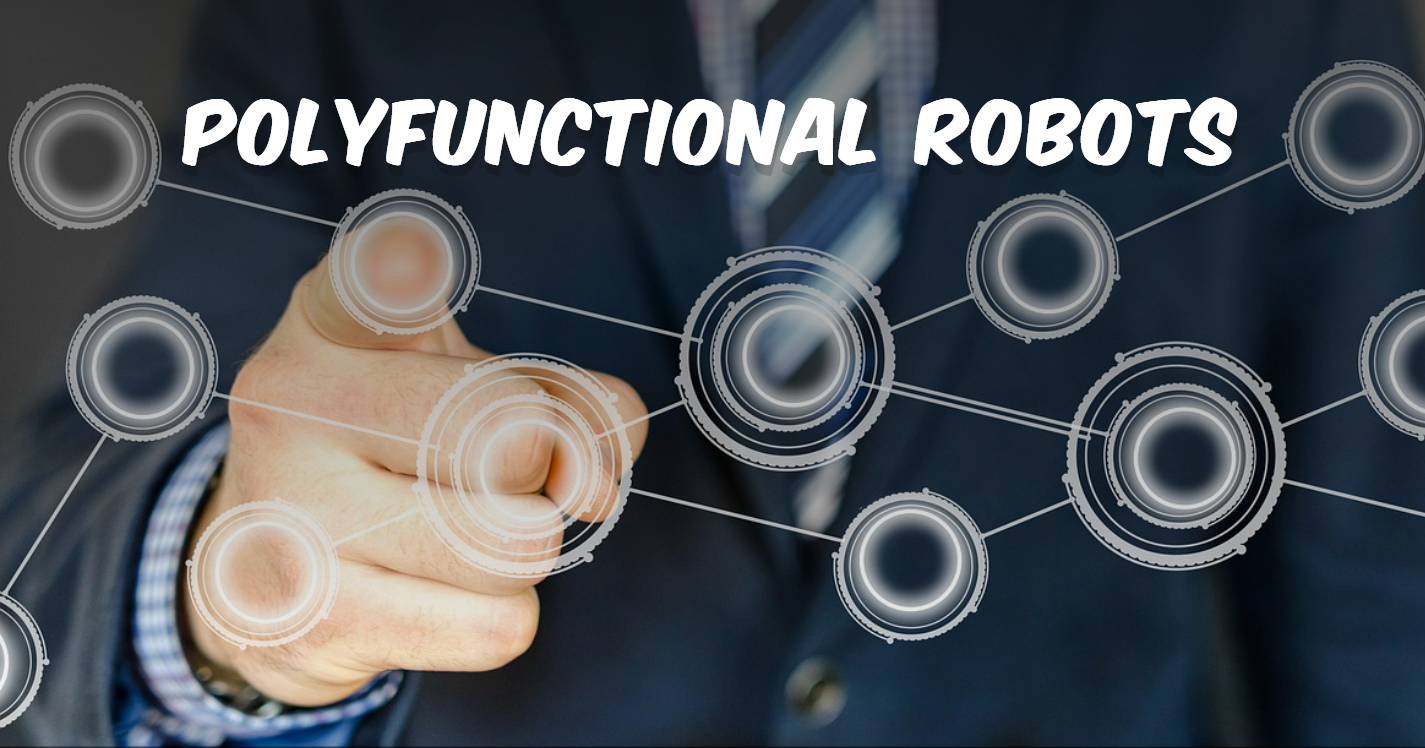In an period driven by quick mechanical progressions, the concept of robots has risen above past the boundaries of single-purpose machines. The unused wilderness is polyfunctional robots—intelligent, versatile frameworks competent of performing a wide cluster of assignments over different spaces.
These robots are reclassifying the potential of robotization by consolidating adaptability with insights, situating themselves as irreplaceable resources in businesses extending from healthcare and fabricating to defense and household environments.
What Are Polyfunctional Robots?
Polyfunctional robots are automated frameworks planned to execute numerous, regularly irrelevant assignments with tall effectiveness. Not at all like conventional robots modified for particular capacities (e.g., collecting car parts or vacuuming floors), polyfunctional robots are built with progressed program models, secluded equipment, and advanced AI calculations that permit them to switch assignments consistently and adjust to unused environments.
These robots may utilize machine learning, computer vision, sensor combination, and normal dialect handling to get it and connected with the world. Their capacity to self-learn, make real-time choices, and work independently makes them capable apparatuses in complex and energetic settings.
Key Highlights of Polyfunctional Robots
1. Errand Adaptability
Polyfunctional robots can adjust their work agreeing to the circumstance. A robot working in a clinic, for illustration, might provide pharmaceutical in the morning, help in quiet versatility in the evening, and purify rooms in the evening—without the require for human reprogramming.
2. Measured Design
Many polyfunctional robots are secluded, meaning their components can be swapped or reconfigured to perform distinctive errands. This measured quality gives cost-efficiency and adaptability, particularly in businesses where assignments regularly change.
3. Fake Insights Integration
AI is at the center of polyfunctional mechanical autonomy. Through profound learning and neural systems, these robots learn from past errands and make strides over time. AI too empowers them to handle unstructured situations, a key capability in real-world applications.
4. Sensor and Recognition Systems
Advanced tangible inputs such as LiDAR, ultrasonic sensors, infrared cameras, and touch sensors permit polyfunctional robots to see their environment precisely. This is basic for errands requiring accuracy, like surgery or sensitive assembly.
5. Human-Robot Interaction (HRI)
Through discourse acknowledgment, facial acknowledgment, and motion translation, these robots can communicate viably with people. This is particularly profitable in healthcare, instruction, and benefit segments, where collaboration with individuals is essential.
Applications of Polyfunctional Robots
1. Healthcare
In healing centers and eldercare offices, polyfunctional robots are being conveyed for errands such as medication conveyance, persistent checking, versatility help, and indeed companionship for the elderly. Robots like Moxi and Beauty are cases of healthcare robots prepared with AI to back restorative staff and make strides understanding care.
2. Manufacturing
In shrewd industrial facilities, polyfunctional robots streamline generation by taking care of different assignments like gathering, quality assessment, stock administration, and bundling. With the integration of AI and IoT, these robots can optimize workflows and diminish downtime.
3. Military and Defense
Defense divisions are investigating the utilize of polyfunctional robots for observation, bomb transfer, look and protect, and coordination’s back. Robots such as Boston Dynamics’ Spot or QinetiQ’s Claw illustrate the flexibility and toughness required for military operations.
4. Residential Use
Polyfunctional robots in homes can perform a wide extend of chores, from cleaning and cooking to giving domestic security and senior help. They can learn schedules, associated with clients, and alter behavior based on family needs.
5. Agriculture
In farming, polyfunctional robots offer assistance with planting, watering, pesticide application, and collecting. Prepared with vision frameworks, they can evaluate trim wellbeing and optimize surrender without human intervention.
6. Instruction and Research
Robots in instructive settings can act as guides, lab collaborators, or collaborative investigate accomplices. They are particularly supportive in STEM instruction, empowering intuitively and hands-on learning experiences.
Benefits of Polyfunctional Robots
● Proficiency and Cost-Effectiveness
Instead of conveying numerous robots for distinctive errands, a single polyfunctional robot can handle a few parts. This diminishes costs, spares space, and disentangles management.
● Scalability
These robots can be scaled effortlessly over diverse operations. A robot utilized in one production line for get together can be reconstructed or reconfigured for assessment or coordinations in another facility.
● Improved Safety
In dangerous environments—such as calamity zones, profound mines, or chemical plants—polyfunctional robots can supplant human labor, minimizing the hazard of harm or death.
● Nonstop Operation
Unlike people, robots can work 24/7 without weariness, which is especially useful in segments where nonstop efficiency is crucial.
Challenges and Considerations
Despite their guarantee, the advancement and sending of polyfunctional robots come with challenges:
- High Beginning Costs: Whereas they are cost-effective in the long run, the forthright speculation can be critical due to progressed components and complex AI systems.
- Ethical and Legitimate Issues: Questions around work relocation, decision-making specialist, and responsibility stay unresolved.
- Security Concerns: With AI and network comes the chance of cyberattacks. Guaranteeing secure and scrambled operations is critical.
- Integration with Bequest Frameworks: Numerous businesses still work with more seasoned advances, making integration of progressed robots difficult.
- Human Acknowledgment: In a few divisions, there may be resistance to mechanical integration due to fears of excess or distress with automation.
The Street Ahead
The future of polyfunctional mechanical technology lies in indeed more profound integration of counterfeit insights, cloud computing, and bio-inspired plan. With progressions in neuromorphic chips and quantum computing on the skyline, the cognitive and problem-solving capabilities of these robots will multiply.
Research is moreover centered on creating self-reconfigurable robots—machines that can physically alter their shape and work based on the assignment at hand, associated to science fiction’s “transformers.” These robots may work in extraordinary conditions like profound space or undersea missions.
Additionally, as governments and businesses thrust for supportability, polyfunctional robots seem play a basic part in green vitality, reusing, and natural monitoring—taking on errands that are labor-intensive, monotonous, and unsafe to humans.
Conclusion
Polyfunctional robots symbolize the advancement of mechanical technology from task-specific automatons to shrewdly, versatile partners. Their rise reflects a broader move toward mechanization that is not as it were shrewd but too flexible. As these robots gotten to be more reasonable, secure, and user-friendly, they are balanced to ended up an fundamentally portion of day by day life and work, changing businesses and moving forward quality of life on a worldwide scale.
The travel of polyfunctional mechanical autonomy is fair starting, and its potential is constrained as it were by our creative energy.









Leave a Reply